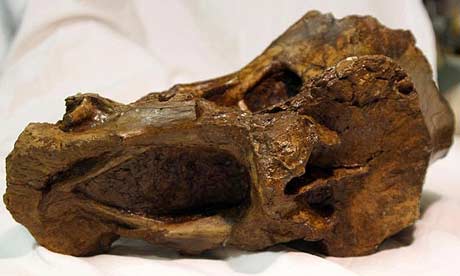
From Gun Control.... 'non partisan' indeed, LOL. They are just another Republican/NRA lobby.
These college students should be required to take a logic course or at least a situational sociology course . Because they obviously miss the stupidity of their argument. Lax American gun laws, and its wild west gun culture create the climate and ability for people to use guns at random. Wisconsin allows eight year olds to carry guns. Ipso facto we need more gun toting folks to be able to shoot it out with them. Yep that is the very definition of 'public safety' ...American style.Guzman, an economics major at Texas State University-San Marcos, is among 8,000 students nationwide who have joined the nonpartisan Students for Concealed Carry on Campus, arguing that students and faculty already licensed to carry concealed weapons should be allowed to pack heat along with their textbooks.
"It's the basic right of self defense," said Guzman, a 23-year-old former Marine. "Here on campus, we don't have that right, that right of self defense."
Every state but Illinois and Wisconsin allows residents some form of concealed handgun carrying rights, with 36 states issuing permits to most everyone who meets licensing criteria. The precise standards vary from state to state, but most require an applicant to be at least 21 and to complete formal instruction on use of force.
The fact that anyone anywhere anytime can get a gun is not the problem no sir, it's the fact that innocent law abiding citizens can't carry concealed weapons that's the problem. Yep love that circular logic.
Come to think of it that reminds me of the Broadway black comedy that became a movie from 1971 called Little Murders written by Julius Feiffer, Village Voice cartoonist and starring Eliot Gould. Yep that's the logical out come of this particular lobby group. And 1971 was the last time we heard from Young Americans For Freedom.
And as usual Americans will claim their right to shoot each other is protected under the Second Amendment. However that Amendment deals with an armed population; a citizens militia, as opposed to a standing army. Such guns would be a collective not individual responsibility. Such as having a militia in each town or city that has a collective weapons cache.
Today America has both a standing Army and a militia; the National Guard.
"A well-regulated Militia being necessary to the security of a free state, the right of the people to keep and bear arms shall not be infringed."
SEE:
Public Suicide
Emotional Plague
Bush School Summit
The Solution To Columbine Syndrome
Stupid Gun Argument
The Spectre of Charles Whitman
Gun Nutz
Ban Handguns From Cops
Canada’s Billion Dollar P3 Boondoggle
Find blog posts, photos, events and more off-site about:
school shootings, Texas, shootings, second amendment, US, Little Murders, Students for Concealed Carry on Campus, guns, Young Americans For Freedom, gun control,















![[shunka.jpg]](https://blogger.googleusercontent.com/img/b/R29vZ2xl/AVvXsEgMIDb__zwQ0Kw5MOjFF6nEXzzZ8-qm98S4eFUkLQRq2AST9c3B4rTtxQJKCN5NAN8vc6Cy0tLmRN3WU7BgjigTi_gSQVX1aQKMGSKNoRFLTvyJMceqWY2Bd1BcICcbWiD6n-03Ig/s1600/shunka.jpg)


